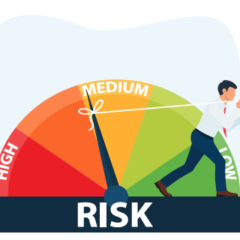Published on
Vaping Myths and Realities
Blowing Through the Haze
In this edition of Patient Pulse, we’re pleased to welcome Dr. Miguel Divo for a discussion on vaping myths and realities. Dr. Divo is a pulmonary and critical care medicine specialist who cares for patients with chronic obstructive pulmonary disease (COPD) and general needs in pulmonary medicine. He is the co-director of the Spaulding Rehabilitation Hospital Mechanical Ventilation Unit, and he also teaches trainees at Brigham and Women’s Hospital.
In this webinar, Dr. Divo addresses the following questions:
- What is an “e-cigarette”?
- How does vaping affect the heart and lungs?
- Can e-cigarettes help adults quit smoking regular tobacco cigarettes?
Key Takeaways
- E-cigarette use has increased dramatically in the past decade.
- There is a [false] public perception that e-cigarettes are harm-free.
- There’s growing evidence that e-cigarettes can have negative and serious effects on the heart and lung systems.
- E-cigarettes should NOT be marketed as a cardiovascular-safe product.
- Many issues around e-cigarettes and long-term heart effects remain unanswered. Additional experimental and clinical studies are needed.
Full Transcript
It’s our pleasure to introduce Dr. Miguel Divo for a talk on vaping myths and realities and the impact that e-cigarettes may have on cardiovascular health. Dr. Divo is a pulmonary and critical care medicine specialist who cares for patients with chronic obstructive pulmonary disease (COPD) and general needs in pulmonary medicine. He is the co-director of the Spaulding Rehabilitation Hospital Mechanical Ventilation Unit, and he also teaches trainees at Brigham and Women’s Hospital. So thank you so much for being here with us, Dr. Divo, and please take it away.
Miguel Divo, MD: Thank you, everyone, for being here. Thank you to the North American Thrombosis Forum for having me. So, I’m a pulmonologist among cardiologists, but this is a topic that is very important, and I’m going to be talking about vaping. But before saying that, let me now talk about why we’re going to be talking about vaping. So, three points that I would like to address. The first one is what is an e-cigarette? It sounds very simple, but I’m going to be talking a little bit more about how these things work. Second, how does vaping affect the heart and the lungs, and is this a safe or unsafe device? And three, can e-cigarette helps adult quit smoking?
We’re listening and hearing a lot about preventable risk factors for cardiovascular diseases. Smoking is one of them. Can this be a conduit? This is also the way this kind of device has been marketed in the United States. So, this is the e-cigarette. We call it an e-cig, e-hookah, mods, vape, vape pen…you can see a lot of different names. And it comes in different shapes – some of them even in the shape of a USB port. So, very easy to hide, very easy to disguise. And this is something that also is attracting our young population, which is very well targeted for.
One thing that is important and a hallmark here is that vaping, e-cigarettes, or whatever you want to call it, is something that started in the US market in 2007. So, we’re talking about less than 20 years of experience compared with the regular cigarette, for which we have many, many years of experience in understanding what the health consequences are of regular cigarettes. So now let me dive into how this thing is built. So, we have a cylinder for which we have a rechargeable battery. From that rechargeable battery, there is what we call a heating element or aerosolizer. There is then a container where there’s a cartridge, or we refill it with a liquid and that is the e-liquid, and that is what people can use as disposable or recharge it.
The mouthpiece, once this gets heated and you warm this liquid, then we create the aerosol, and that’s what people are inhaling. What we’re addressing here is that we’re not creating combustion, but also, we’re heating something and creating it. So this is a little bit of the same technology from the disco era where we have this steam going, and we were dancing and inhaling all that, but now it’s made in a different way because now we have something that is the e-liquid or the liquid that needs to be heated in order to create this aerosol. And there are certain elements here that are important because we don’t know if they are exactly safe for us.
Let me try to now talk about the e-liquid, and we have these very fancy names for what it includes, such as propylene glycol or glycerol, nicotine flavors and probably other things like THC, which the cannabis. And I’m going to say that whatever we inhale is a combination of all those things. And this from the CDC, I’m going to divide this into two different categories of elements that we are inhaling with this device. One is an addictive compound. It’s either the nicotine or the cannabis. And the other part is something that needs to be warm in order to create this aerosol. And from there, what we know is that there are fully harmful—or potentially harmful—compounds, such as vitamin E, volatile organic compounds, heavy metals, flavoring, and ultra-fine particles. And you can see a little bit of the graphic depicting all this tells you it’s not really very safe what we’re getting.
And now, what are the addictive compounds that we see in e-cigarettes or vaping? We have nicotine, for example. And let me show you this slide about nicotine. It’s a fancy slide, and I apologize, but it’s important because it tells me what the behavior is of somebody who is smoking and why nicotine, which is in this liquid that we’re using when vaping, is so important. Nicotine addiction is one of the most terrible addictions that we have. It’s very common, it’s legal, and it’s very costly. One pack a day of cigarettes is $11 away, and let’s do the math… that’s almost a $3,800 a year habit. E-cigarettes can be as expensive. Everything depends on how much you are consuming.
But what is nicotine doing to us? I want you to look here, and this is 8:00 a.m., 6:00 p.m., and 4:00 a.m. So, this is the whole day. I wake up, and the first thing that I have is three zones: where I am in the pleasure, arousable zone, neutral zone, or I am withdrawing. And remember, this is addiction. I need this, otherwise my brain and I feel very, very unsatisfied, uncomfortable, jittery, and perhaps anxious. So what you have here is that every time somebody – and this is for regular cigarettes – takes a cigarette, you are in this mode. The levels of nicotine drops, and you take the next cigarette, and the next cigarette, and the next cigarette. You fall asleep, and the first thing you do first thing in the morning is take the next cigarette.
This is the addiction of nicotine. And this is a way to hook anyone, especially the young people. And those who have done it and say doctor, I have been smoking, I know it is not good for me; however, I cannot quit. So, you’re making something that is addictive and you’re charging for that $11 a day. So, let’s talk – and I am a pulmonologist – does vaping create problems? And here I’m going to show you a CAT scan. These are normal lungs, that’s how the lungs should be looking, and these are the images of this disease that we have seen, especially in 2019, which is the e-cigarette or vaping product-use-associated lung injury, also called EVALI.
And as you can see, those are very nasty images, and these are people who need to be in the intensive care unit, be on a mechanical ventilator—meaning on a breathing machine—and in 2019, we had an outbreak so to speak. In this outbreak, we found out that most of the cases were because there was cannabis in the liquid of the vape and some form of vitamin E as a preservative. How big was the problem? 2,800 people got sick and admitted to the hospital, there were 68 deaths, and the majority of EVALI cases were in people under 30 years of age. So, this is not trivial and is an acute process that can happen by vaping.
And what about the heart? There are few studies…remember that it’s been less than 20 years since this product has been on the market. What we know is that if you were a former cigarette smoker or a former e-cigarette smoker, your risk, as you can see in this red arrow, it’s going to be less than if you are a daily cigarette smoker or a daily vaping user. And you can see that regular cigarette smoking is more harmful than e-cigarette smoking. However, this is not a zero risk. And this is one study, and we need more time to get more data.
So, can e-cigarettes help us quit smoking? And the answer is…I’m not sure. It’s been labeled as safer. I will say, you know what, it’s less harmful. So, let’s try to use the right words for this. I hope that I show you some information that vaping is not risk-free, that this is something that can cause direct harm to the lungs and to the heart and will not decrease the risk of cardiovascular disease if you’re using it. However, it’s less harmful than using regular cigarettes.
And using e-cigarettes to stop smoking? There is a study that started from its one-year follow-up—so I’m using January to December, but it’s only one-year follow-up—and it looked at “can you stop smoking regular cigarettes? And we’ll give you a vape or e-cigarette as a way to suppress this anxiety of having the cigarette, and that can be your quitting tool.” So what we found is the following: over one year, around 18% of those individuals that used the e-cigarette compared to those who only used nicotine replacement—the gum, the patch or whatever form—
there were only 10% who quit smoking. So it’s almost twice, that is the good news. However, if we use other type of treatments that we know that are effective to quit smoking—and I’m using this, the Wellbutrin or, as you can see, and I’m going to use the commercial name, which is the Chantix plus nicotine—you’ll reach 20 to 26%. So, vaping is not better than the other treatments that we know can be effective for people who want to quit smoking.
More importantly, among those who quit smoking, that 18% who definitely quit smoking, there were 80% of them were still using the vape or the e-cigarette after one year. So it’s not that you’re replacing the cigarette and using this for a short period of time, went off of that e-cigarette, and now you’re not using anything, which is the ideal. Remember, if you are a former smoker, you decrease the risk. Here you’re not a former smoker, you’re a daily smoker, so you still have a risk because after one year, 80% were still using the vape. So, we need to understand this information better because it does not make vaping super safe. So switching from smoking to e-cigarette does not appear to significantly lower the risk of having a cardiovascular event, and that is important to understand among the people who were enrolled in this study.
All right. So what are the take-home points? One, e-cigarette use has increased dramatically in the past decade among many people, and some of the time has been used as a way to quit smoking or has been labeled in that way, but—especially for the youngsters—it’s a dangerous process. For all of us, we need to understand is it really a good alternative? Should I use something else? There is a general public perception that e-cigarettes are harm free and safer than alternative tobacco and/or cigarettes. And there is growing evidence that e-cigarettes can have various effects in the cardiovascular and lung systems. I hope I was able to demonstrate that to you. So e-cigarettes should not be marketed as a cardiovascular-safe product. That is what we know right now, and we need more information, and that takes time. And I don’t want to experiment with any one of us in order to do that, okay? And with that, I will stop and thank you for your attention.



